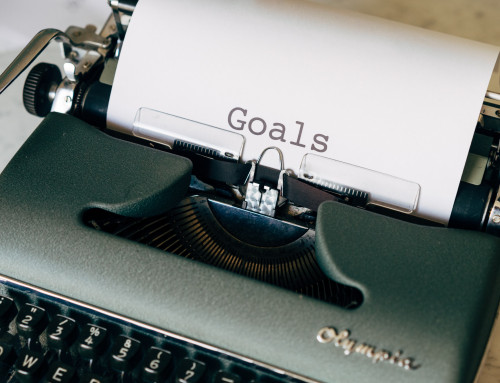Life begins and ends with the breath, and every breath we take can have a positive or negative impact on our bodies depending on how it is performed.
The average person breathes 25,900 times a day, which correlates to 12-16 breaths per minute. Though one of my teachers, Paul Chek, who is an internationally-renowned expert in the fields of corrective and high-performance exercise kinesiology, believes that from his own clinical experience, that number should be 6-10 breaths per minute for optimal health.
So, let’s start by finding out what type of breathing pattern you have.
Sit up straight in your chair, and place your right hand on your chest and your left hand on your abdomen. Now, take a few deep breaths IN and OUT through the nose. Be conscious of which hands is moving the most. If your left-hand moves more than your right, i.e., if your stomach rises more than your chest, then you are already breathing as nature intended, and reading this article will show you ways to improve how you breathe. If however, you find that your chest moves more than your stomach, then you are not breathing as optimally as you could be, then this article is going to be super helpful for you to read.
When we ‘Belly’ breathe we allow the lungs to expand entirely, especially the lower portion, and the diaphragm to contract fully. Actually, according to the noted respiratory physiologist, John West, the lower parts of the lungs are about 7 times more productive in oxygen transport.
Here’s the thing, most of us breathe without giving it a moment’s thought. It’s something you’ve done subconsciously since birth, and unless you’ve had some kind of respiratory problem like Asthma, then you wouldn’t necessarily think about it.
The importance of breathing properly really helped me a couple of years ago when I had a panic attack while driving. I was heading to visit my daughters who live out in the countryside and one of the roads was closed. I spent the next 45 minutes being taken on different routes by my Sat Nav that always brought me back to the road that was closed, making me late and more anxious and stressed each time.
My heart was beating faster, blood sugar levels were dropping and I was feeling a little spacey, and I started to hyperventilate. As the minutes ticked by, my mind was working at 100 miles an hour trying to figure out what to do, I knew that I had to change my state to find a solution.
I stopped for a moment to catch my breath and took 5-6 deep breaths. As I did, someone appeared out of the corner of my eye, a local walking by. I rolled down the window and asked for help and within 5 minutes I was back on an open road and heading in the right direction.
I continued to breathe deeply and remind myself that everything was good, though the stress was enough for me to have to pull over and threw up. As I kept breathing deeply and drank some water my body relaxed and my daughters were none the wiser to my experience 10-15 minutes later, when I was smiling and ready to have an amazing day with them.
Breathing is an integral part of health and an important factor in maintaining pH levels in the body. Just to put that into context, about 10 billion biochemical reactions a second in the human body depends on pH levels. So you can eat a healthy diet and sleep well, though if you are breathing wrong, then your pH levels can still be out of balance, forcing your body to release minerals like calcium from your bones to help alkalize your body.
Actually, if your pH levels drop below 7.35 can cause a condition known as Acidosis and if it drops below 7.0 it can cause death.
I didn’t really understand the importance of breathing right until I trained with Paul Chek, especially how posture, diet, stress, lack of physical exercise, stuffy environments and even our thoughts and emotions could all impact on how we breathe.
Nearly every single client I have worked with who came to me with a physical injury had a poor breathing pattern. This is because breathing involves not only the diaphragm but muscles in the neck and in the lower back and pelvis. When your body is under stress due to a physical injury you are more likely to breathe through your mouth rather than through your nostrils, as the body’s demands for more oxygen increases, especially when under stress.
When you breathe through your nostrils your tongue rests on the roof of your mouth stimulating the calming rest and digest part of the nervous system, whereas with mouth breathing your tongue goes down and forward stimulating the stress responding fight or flight part of your nervous system. Thus creating a vicious cycle that if left untreated can lead to further problems.
A great way of training yourself to ‘Belly’ breathe is by tying a piece of string around your waist during the day. This is a technique that I learnt from Paul Chek. You tie the string tight, though not too tight over the belly button and depending on your body shape you can use tape over the string on your hips so that the string doesn’t fall down. Then every hour you set a reminder to consciously take 10-12 deep breaths. The string creates what is known as a negative feedback loop as it tightens against your skin, to remind you that you’re doing it right.
Now, when I got into running and weight lifting when I was younger I became more aware that I was breathing more through my mouth, especially as the workouts became more demanding. This is natural as our demand for oxygen increases.
In a series of studies from the University of Arizona, they demonstrated that the more demanding the activity, the more we switch to mouth or, more correctly, breathing in through the nose and out through the mouth breathing pattern, because it feels easier.
Actually when doing movements that require stabilization in the body, like lifting heavy weights, then breathing in and holding your breath while you lift and then breathing out at the top of the movement through pursed lips is a good idea. This is because the diaphragm alongside breathing plays an important role in stabilizing the spine. So it will shift to this role when the demands on the body require it. This is why you breathing heavier when you first started exercising or start learning a new activity.
A technique that I came across many years ago and have been using for the last month or so to train myself to breathe through the nostrils when exercising is The Buteyko Method. It’s named after the Russian physician who developed the technique, Dr Konstantin Buteyko, who discovered the method as a result of trying to address his own dangerously high blood pressure at the age of 26.
So look out for further articles in the future as I’ll share my progress with it.
As I got more into Mindfulness and Meditation about 10 years ago, I became more aware of how my thinking affected my breathing. In meditation, you are learning to slow down and become aware of your breathing to get into a relaxed state. Though when you have a mind like mine was, which had a million thoughts running around it constantly, I found doing meditation hard.
This is because there is an intricate relationship between your body and mind. Let me show you how this works.
I want you to think about something or someone that makes you angry or frustrated and as your thinking about this become aware of how you are breathing.
Now, think of someone or something that makes you feel happy and again notice how your breathing changes. There should be a noticeable difference between the two.
There’s was an interesting study by researchers from Max Planck Institute for Chemistry in Mainz, Germany, which showed how closely our emotions and breathing are related.
The researchers studied 9,500 people watching 16 different films, from romcoms to horror, and looked at whether air composition changed during particular scenes that were extra suspenseful, romantic, or emotional in any way.
Suspenseful moments showed upticks in CO2 and isoprene, a chemical associated with the tensing of muscles. Every emotional type had its own chemical composition, so you could track the emotions of the moviegoers just by looking at the chemicals in their breath.
So I found that when I focused on the breath I could calm my mind so that it didn’t distract me during my meditations. Inhaling for a count of 4, then exhaling for a count of 4, allowed my mind to switch off so that I could drop into a more relaxed state. This is also a great technique to use if you are struggling to get to sleep at night.
Remember, when breathing normally, the stomach gently expands and contracts with each in breath and out breath. There is no effort involved, the breath is silent, regular, and most importantly, through the nose. Happy breathing and feel free to comment below with your thoughts or any questions that you have.







Leave A Comment